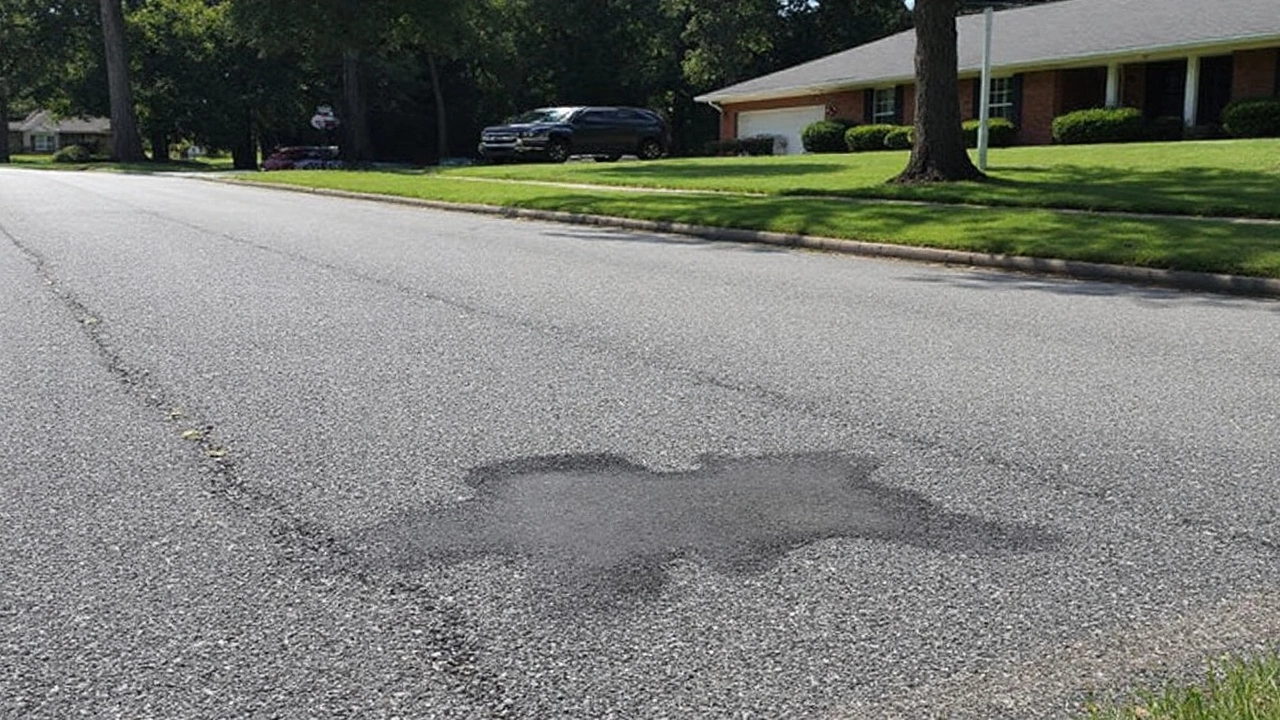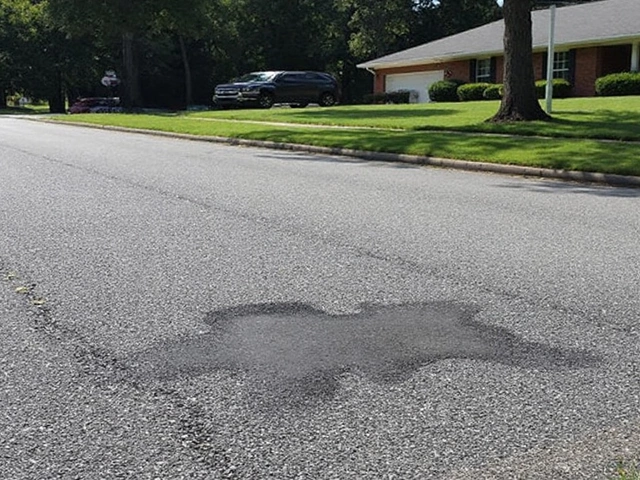Perry Hall burnt fawn case: Five charged after baby deer set on fire in street

A burned fawn, a stunned neighborhood, and five young defendants
Neighbors in Perry Hall’s Forge Heights woke up to a scene they still can’t shake: a baby deer lying in the street, severely burned, with ropes around its neck and a dark, arcing scorch mark fanned across the pavement. Baltimore County Police say it started as a car collision and turned into something far worse. Now five people—two 18-year-olds and three 17-year-olds—face criminal charges in a case that has set off anger, grief, and a wave of online outrage.
Police announced the charges on Monday, August 5, 2025, after a nearly two-week investigation. Officers were first called on July 24 to the 20th block of Bangert Avenue for what came in as a “hazardous road condition.” The hazard, residents told officers, was the lifeless fawn. Investigators documented ropes around the animal’s neck and a burn pattern curving across the roadway. The next day, neighbors said charred gardening gloves and other singed debris were still visible on the street and in adjoining yards.
Detectives say the sequence began when a deer was accidentally struck by a car driven by one of the suspects. Instead of waiting for authorities or calling wildlife officials, the group allegedly set the animal on fire in the middle of the street. Police have not publicly detailed what ignited the blaze or whether an accelerant was used, but the arc of scorched asphalt became part of the case file.
The five suspects include three 17-year-old juveniles and two adults: 18-year-olds Ethan Cummins and Aiden Holman. All are charged with reckless endangerment, unlawful possession of a game animal, and removal of deer hide. The juveniles were charged; the adults were arrested, according to Baltimore County Police. Councilman David Marks said he was briefed and confirmed multiple arrests in the case.
As the case spread across social media, the defense for one of the named adults pushed back hard. “Ethan Cummins is wrongly accused of a crime he did not commit,” his attorney said in a statement. “We expect evidence will show that he had no role whatsoever in the desecration of a deceased animal. As the case is ongoing, I cannot get into further details here. But the savage social media attacks on this young man are totally undeserved and reprehensible. He deserves his day in court, and we look forward to that, not to being tried on social media.”
The Perry Hall burnt fawn incident rattled a community that usually makes headlines for school events and youth sports, not a dead animal burned in the road. Forge Heights sits just off busy arteries that cut across Northeast Baltimore County. Deer are common here; collisions are, too. Fires in the open street are not—and the image of a scorched arc where the animal lay has become a flashpoint for residents demanding answers and consequences.

What police say happened, the charges on the table, and what comes next
For investigators, the timeline matters. The initial collision, the decision to move or restrain the animal, the moment the fire began—each step helps determine charges and intent. Police say they’re still assembling physical evidence, statements, and any available phone video to fill in gaps. They have not said who called 911, what was used to start the fire, or who handled the ropes reportedly found on the fawn’s neck.
Reckless endangerment sits at the center of the case. In Maryland, prosecutors use that charge when someone’s actions create a substantial risk of death or serious injury to another person. It’s a misdemeanor, but it’s serious: under state law, it can be punished by up to five years in prison and a fine. Setting a fire in the road, where bystanders, drivers, or responding neighbors could be hurt, is the kind of conduct that fits the statute, prosecutors have argued in past cases.
The two wildlife-related counts—unlawful possession of a game animal and removal of deer hide—speak to a different part of the law. Deer are considered game animals in Maryland, and possession is tightly regulated by the state’s Natural Resources Article. Outside of lawful hunting seasons and permitted circumstances, keeping or removing parts of a deer can trigger charges, especially if the animal was not taken under a legal hunt or authorized dispatch. Penalties for these offenses typically involve fines and can lead to license suspensions in hunting-related cases. Police did not say whether a hunting license was involved here, and none is required to transport a deer struck by a vehicle for disposal under proper procedures—another reason the allegation of burning in the roadway is central.
Some residents have asked why the initial list of charges did not include a specific animal-cruelty count. Police have not addressed that question publicly. Early charging decisions often focus on clear, documentable offenses while investigators wait on lab work, interviews, and consultation with prosecutors. Charges can be amended later if the State’s Attorney concludes the facts meet additional statutes. For now, the case sits on what police say they can prove today.
The presence of three juveniles complicates what the public will learn in the near term. Juvenile cases in Maryland are generally confidential, and hearings take place behind closed doors unless a court orders otherwise or a case is moved to adult court. Police did not release the teens’ names. Whether any juvenile charges could be transferred will depend on factors such as age, prior record, and the State’s Attorney’s approach—none of which officials have disclosed.
The adult defendants, Cummins and Holman, will move through Baltimore County District Court first. Initial appearances typically address bond, counsel, and scheduling. Court dates were not immediately available Monday, and police did not release details about bond conditions. If prosecutors seek indictment on any felony-level allegations later, the case could move to Circuit Court. For now, the three listed counts are misdemeanors.
Beyond the legal process, the emotional fallout in Forge Heights has been intense. Parents told me they struggled to explain the scene to their kids. Dog walkers rerouted for days. The blackened arc on the street—still faintly visible after summer storms—became a marker people pointed to when they slowed their cars. Animal welfare advocates denounced the act and pressed for education on what to do after wildlife collisions: pull over safely, call police or the state’s wildlife hotline, do not attempt to euthanize or burn the animal, and keep bystanders away from the roadway.
The fire itself raised separate safety alarms. Any open flame near parked cars, dry grass, or leaking fuel lines can escalate fast. An ignited accelerant—if one was used—can travel under vehicles, catch yard debris, or burn a bystander. Those hazards underpin the reckless endangerment count and will likely be a focus if the case goes to trial.
Social media turned the incident into a countywide cause in hours. Photos of the scene pinged around neighborhood groups, then spilled onto larger platforms. Alongside legitimate tips for police came misidentifications and threats—one reason defense lawyers and some community leaders urged restraint. The attorney for Cummins called the online pile-on “reprehensible,” and police quietly reminded residents that investigations take time, and the presumption of innocence is not a slogan—it’s the rule.
Perry Hall isn’t new to deer collisions. Suburban growth and fragmented woodlots put wildlife on crowded roads at dawn and dusk. Most drivers are shaken but unharmed. The next steps are routine: call non-emergency police, wait in a safe spot, and let officers or wildlife agents handle the animal. What happened on Bangert Avenue cut against that script, and that’s why it’s now a criminal case.
There’s still a lot we don’t know. Who lit the fire? Who tied the rope? Did anyone try to call for help before flames took over? Investigators say the case is active, which means more interviews, more evidence, and, possibly, an updated charge sheet. For now, the five defendants face the counts police described Monday. The community is watching, the families are lawyered up, and the courts will take it from here.

